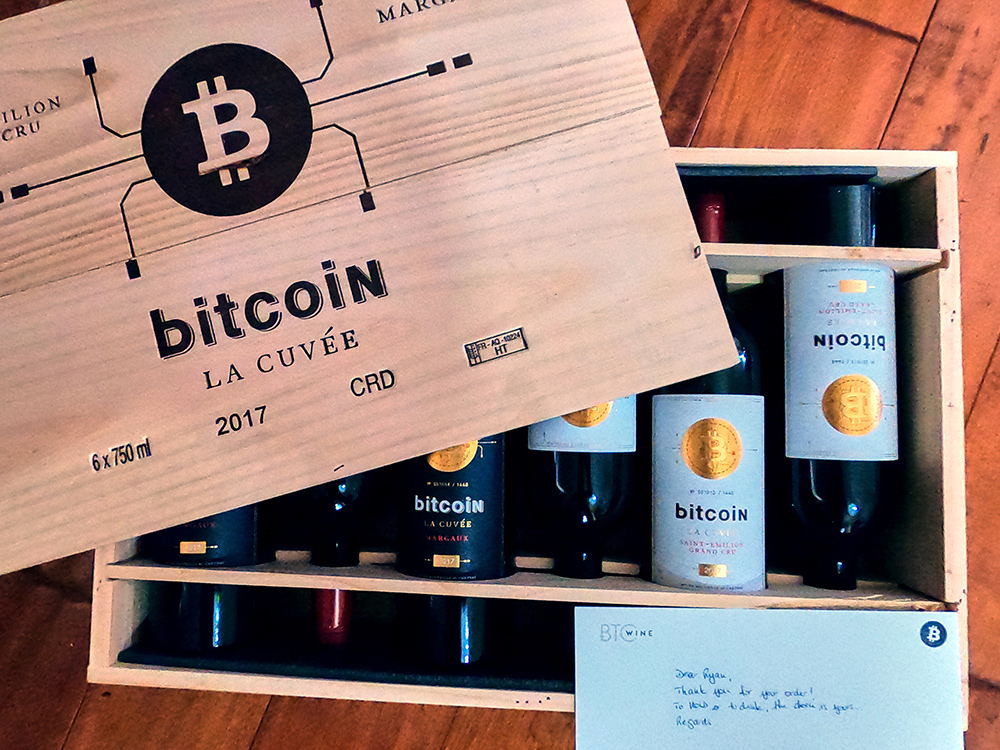Before you read my article, please understand that I am NOT a financial advisor and you should in no way take anything I say as financial advice…
I remember the early days of working at a booth inside a Sam’s Club for my local dial-up Internet provider in the mid-to-late 1990s and trying to explain the benefits of the Internet and how we were looking at something that would change life as we know it. Some customers accepted it without any problem as they also saw what I did and understood that there was so much opportunity for its future. While others were skeptical yet willing to at least consider the possibility that it had its benefits. And then finally there was a chunk of customers who outright rejected it as nothing more than for perverts looking for porn or drug dealers seeking a way to interact globally without being traced. I even remember a man laughing at me for working at this booth and how it was a waste of everyones’ time. While yes, both of these vices are achievable online, it is a gross oversimplification of only looking at the negatives and completely ignoring the positives that would also be available through it. I mean, then a car is only good for both of these items since can’t one drive a car to seek out a gentlemen’s club or locate a drug dealer?
Here we are some thirty years since I worked at that booth and now the Internet controls so much of our lives. From constant information overload through social media, to our ability to change our central air’s temperature from far away, to thankfully having video conferencing during a pandemic, it is clear that the Internet has become a major necessity for most of our lives. To think that so long ago many saw it as a fad that would go away.
Yet now, we sit in the same position as we did back then. With the release of Bitcoin in 2009, the world was introduced to its first cryptocurrency. In its early years, Bitcoin was certainly only utilized by the most geekiest of geeks. After a few years, other types of coins, many of them nearly exact clones of Bitcoin were created, thus creating the term “alt coins” for alternative coins to Bitcoin. Among them were Litecoin, often considered the silver to Bitcoin’s gold. It was during the 2013-2014 bull run that we first saw Bitcoin’s price hit triple digits thus raising many eyebrows to its full potential. During this time we saw a boom in additional alt coins, including Dogecoin created as a “joke”, yet it is still here today. After that bull run ended, many speculated that cryptocurrencies were a fad and Bitcoin began being declared dead so many times that a website was created keeping track of the number of times mainstreet media has said so. Around this downtime was when a new idea arose, Ethereum, which took the simple of idea of a coin from just being worth a value and turned it into something more: a way to create contracts, track data, store media objects, and yes even be a store of value.
It was in 2017 that things really started changing for cryptocurrencies and I even mentioned it in my book Disregarded Entity: Lessons Learned by a 15 Year Freelancer. In that year’s bull run I started hearing more people in coffee shops, restaurants and more discussing it, which of course meant that the naysayers grew even louder dissing it in the same way I remember the early Internet haters did. “Bitcoin and crypto are only used by bad people to do bad things and it is not eco-friendly”. Yet can’t the same be said for fiat currency? Every so often a bank is caught red-handedly involved in money laundering or a person is caught paying for sex or illegal drugs with fiat. How much energy is burned by heavy machinery drilling oil, digging for diamonds or gold, or from bank branches? I have at least 20 different bank branches within a 3 mile radius of me alone. All of them use electricity that runs 24/7. Again as the bull run ended, articles came out claiming that Bitcoin was dead (again) and that it is for the best since only bad people use it for bad things. Towards the end of 2020, we saw the price rise again and the latest cycle is underway. With each time, it all seems to become more mainstream and accepted. More institutions are accepting it, a few governments are allowing it to be real currency, and some of them are even creating their own cryptocurrency to steal some of Bitcoins thunder. Geez, we even have three year old girls explaining cryptocurrencies on Twitter!
But how does all of this relate to wine and the wine industry at large? For starters, some wine merchants are accepting cryptocurrencies for payment. This can help them curb credit card processor fees if their processor charges a large amount. International orders are a bit easier as well since merchants often charge additional fees for those or in some cases prevent them entirely. It can also work in the wine merchants favor if they believe crypto prices will continue to go up in time. So if they accept $300 worth of crypto today and hold it for 2 years, it may be worth $600 if that crypto’s price has doubled since then.
Most cryptocurrencies are based upon what is called a blockchain. I wont explain them, but you can find out more about them here. Some wineries can use an internal blockchain to track their overall production process by monitoring each step of the process including where (and when) the grapes were picked, as well as through the winemaking process, what warehouse the wines are aging in, when they are bottled, what distributor purchases them, all the way to the store they are sold in. This entire process can also be made public to the end user who can scan a QR code on the bottle to (sometimes) see this information but also to confirm that their bottle is authentic. While some top tier wineries are now offering authentication methods for bottles through private means, some public blockchains like VeChain are offering these services worldwide for anything you want to track including produce in your grocery store. Wouldn’t you like to verify that that head of lettuce truly came from an organic farm? Or your meat truly came from a local farm? This ability can truly help confirm your wine and even adds to the notorious “story” that often helps sell a wine.
Some companies have gone as far as use NFTs (Non-fungible tokens) to provide ownership proof of elite wine bottles stored in facilities. Let’s say you are looking at fine wine as an investment vehicle and want to purchase a bottle of Petrus from a company who offers storage of wine investments in another country. You purchase this wine’s NFT from the company and then can easily see yourself listed as its owner on a public NFT blockchain. This company will now hold this bottle for you in their storage facility with the exact same serial number that is listed in your NFT. A couple of years go by and this bottle’s price has gone up 20% so you decide that you’d like to sell it. Ultimately, you are selling the NFT, not the wine, so this helps skirt the laws that prevent people from selling alcohol. And now someone else owns this bottle in storage and is listed as owner of the NFT. Instead of selling it, lets say you want to actually drink your bottle of fine wine. You could arrange to visit their location and pickup the bottle which would trigger the NFT to be listed as no longer available.
(Update November 14th, 2021: As a fun learning exercise, I decided to launch my own wine themed NFT collection called the Wine Buddies. All Wine Buddies NFT owners will be eligible for free wine and more in the near future. Learn more about them at this article: Introducing the Wine Buddies, my first generative NFT art collection.)
These are just a few of the current ideas available for cryptocurrencies and how they relate to wine. I’m sure there are many more out there and plenty more to come in the near future.

Labelling wine with names of cryptocurrencies is clearly another way that they can help the wine market, as a form of marketing as my wine choices below will explore. For this tasting, I discovered through Twitter that a négociant in Bordeaux had created BTC Wine, a website devoted to purchasing fine wines using cryptocurrencies.

Additionally, they had created two wines using the name “bitcoin wine”, a Bitcoin La Cuvée Margaux and Saint-Émilion. They are available for purchase in 6 packs inside wooden crates (containing 3 of each). The 2017 Saint-Émilion was the darker of the two, but overall tasted lighter with notes of red fruits and medium tannins and higher acids. The 2017 Margaux was more full bodied with higher tannins and mild acids with notes of darker fruits and a stronger finish. I wouldn’t consider them top tier, but I do feel they would fit perfectly fine with upper tier Bordeaux wines.

My second set of wines come from Mano’s Wine located in Kansas City, Missouri who specializes in etching wine bottles with gorgeously ornate drawings of professional sports teams, holidays, lakes and more! It seemed pretty clear to me that etching was their prime draw for customers, while the wine itself was secondary. Need specialized wine bottles for your wedding? Mano’s Wine is where you should go and they even say that they hand paint all of their etched bottles. I first came across their website because they were offering etched bottles with the Bitcoin, Litecoin, Dogecoin, and Etherium logos on them. All bottles and logos looked very stunning, but I was a bit bummed that so little was mentioned about the wine. They say that they choose different wines each year depending on what the best options were at that time. It is very possible that they have a contract with specific wineries for their wines or completely possible that they may just rely on the bulk wine market for help each year. I don’t see this as a major negative as it is clear that their focus is on the etched bottles. Since all 4 of these crypto wine bottles contained the same California Cabernet Sauvignon (no vintage mentioned), I decided to only open one bottle (Ethereum). It was very light bodied with light tannins and acids, notes of candied red fruits and tasted fairly young. Overall, it reminded me of a Cabernet Sauvignon you’d find from the middle shelves at your local supermarket. Nothing spectacular but would be perfectly fine for any normal occasion.
There really wasn’t much of a competition between these wines and that is perfectly fine. Each of them has their market and all are very much drinkable now. I definitely preferred the Margaux (one of my favorite regions), so this wasn’t much of a surprise to me. BTC Wine does say that this wine will reach its all time high in about 20 years, but it will be difficult to leave it in cold storage that long. Haha, I made a crypto joke!
I personally feel that blockchains, cryptos, and wine are just reaching their early stages of interaction. It will be interesting to see how all of them independently grow and come together in the next 10 years. Innovation can not be truly stopped and I am curious to see what comes next.
Remember, what I said at the top, I am NOT a financial advisor, and you should in no way take anything I say as financial advice.







